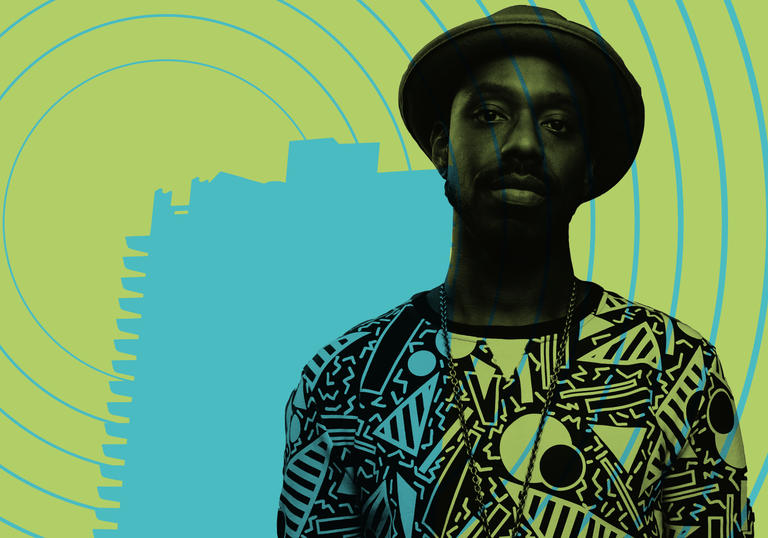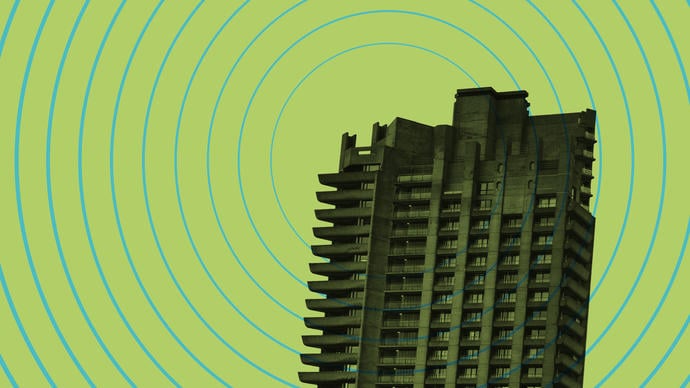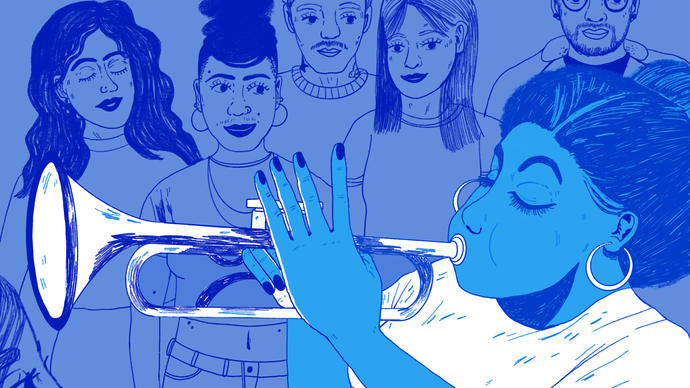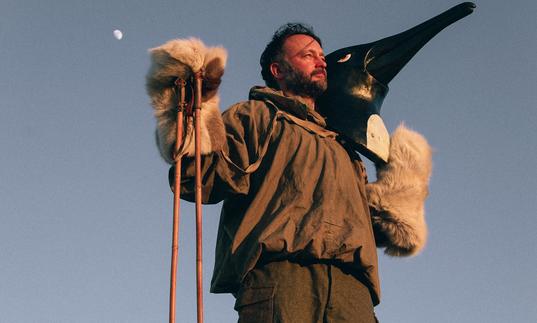The British-Barbadian saxophonist and clarinettist Shabaka Hutchings defies easy categorisation, being as comfortable as a jazz bandleader as he is breathing fresh life into classical standards. In that sense, he has a lot in common with bandleader and clarinettist Benny Goodman (1909–86), who was not only dubbed the ‘king of swing’ but also blurred the boundaries between jazz and classical when he and his band performed at the epicentre of classical music, New York’s Carnegie Hall, in 1938. That same year Goodman proved his classical credentials with a ground-breaking recording of Mozart’s gorgeous Quintet for clarinet and strings.
But Goodman had greater ambitions, and he was determined to increase the clarinet repertoire by commissioning pieces from leading classical composers. First on his list was Aaron Copland, an American who’d started out as an enfant terrible, with music that deliberately challenged his audiences, but who had come to realise in the 1930s and 40s that a greater directness and simplicity of style was his true calling. As Goodman later commented: ‘I made no demands on what Copland should write. He had completely free rein, except that I should have a two-year exclusivity on playing the work. I paid two thousand dollars – real money!’ It certainly was, but Copland didn’t need any financial incentive to fire up the creative juices and had in fact begun jotting down some ideas while he was on tour to Rio de Janeiro in 1947, the year before the commission. There’s no doubt that Benny Goodman’s own inimitable style feeds into Copland’s concerto in all sorts of ways – the freedom of the clarinet’s mellow opening idea, for instance, or the solo cadenza (traditionally a point in a concerto where a soloist gets to strut their stuff) which here forms a bridge between the two movements and in which Copland delights in exploring the extremes of the clarinet’s range, spiced with delicious snippets of syncopation and hints of the tunes that will dominate the second movement. This is a more energetic affair, bustling in with rude good humour, the addition of a piano to the strings/harp mix giving it a new percussive edge; it also features a lively idea borrowed from a folk tune Copland had heard in Rio and, at the end, a brilliant clarinet glissando (‘smear’) that unashamedly borrows from the opening of Gershwin’s Rhapsody in Blue.
Copland’s Appalachian Spring, written just a few years before the Clarinet Concerto, was a game-changer in the world of ballet, creating a new sound-world that seems magically to conjure the great American landscapes. It was commissioned by the great American philanthropist Elizabeth Sprague Coolidge. Like all great ballet music (just think of Stravinsky’s The Rite of Spring), it deserved a life beyond the theatre so Copland devised a suite which melded together the original’s greatest hits and also simplified the ballet’s story, which was by no means straightforward! And just to clear up one confusion – the name of the work was not, as is so often assumed, inspired by the Appalachian Mountains but was in fact only decided upon after the music was complete and came from a poem by Hart Crane.
So what made this piece such a game-changer? Well for starters it was written for Martha Graham, a dancer and choreographer who truly revolutionised dance (not for nothing is she sometimes equated with Picasso in terms of her impact and modernity). Copland’s commission was simply to create a ballet on ‘the legend of American living’. The story centres around a young couple – a farmer and his new bride – and is set in rural early 19th-century Pennsylvania. Copland clearly took inspiration from Graham’s own style of dance, which combined a remarkable intensity with austerity. And into the score he poured folk-like and actual folk melodies, most famously the Shaker song ‘Simple Gifts’ (which we tend to know better in the UK as ‘The Lord of the Dance’). For the suite he expanded on the modest original line-up of flute, clarinet, bassoon, piano and strings; it was unveiled in 1945, performed by the New York Philharmonic, conducted by Artur Rodzinski.
Commissioning proved a vital lifeline for Igor Stravinsky too. His 3 Pieces for Clarinet Solo were written in the last year of the First World War, a time of financial struggle for many composers. It’s a world away from the mighty forces of his ballet The Rite of Spring, composed just five years earlier. But then the great Russian was a master of reinvention throughout his long life. These pieces quite literally create a new genre, being the earliest concert pieces (as opposed to studies) for solo clarinet. Stravinsky wrote them for the Swiss philanthropist Werner Reinhardt, who used his inherited wealth to support many composers and writers, ranging from Rainer Maria Rilke to Paul Hindemith and Arthur Honegger. He’d come to the financial rescue of Stravinsky when he was writing another iconoclastic piece, The Soldier’s Tale, and these 3 Pieces were by way of a thank you from the composer. They certainly make no allowances for Reinhardt’s amateur status and they make use of clarinets in A (pieces 1 and 2) and B flat (piece 3). The first piece is low-lying and quiet. The second is, by contrast, freely improvisatory in style and is written without barlines. In the final piece the mood becomes truly exuberant, full of energy and syncopated rhythms.







